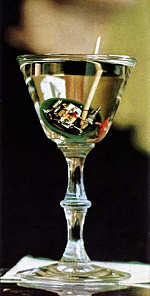 In a clever marketing ploy timed to coincide with the release of the latest James Bond film, BIS has issued new rules relating to the export of surreptitious listening devices (“SLDs”). The Notice announcing the final rule, however, is hardly a model of clarity so that you might really require the services of a super-spy like 007 to figure out what BIS is trying to do. Or you could read this post.
In a clever marketing ploy timed to coincide with the release of the latest James Bond film, BIS has issued new rules relating to the export of surreptitious listening devices (“SLDs”). The Notice announcing the final rule, however, is hardly a model of clarity so that you might really require the services of a super-spy like 007 to figure out what BIS is trying to do. Or you could read this post.
Under the current rules, SLDs are classified under ECCN 5A980. Licenses are required for exports to all destinations of items classified under ECCN 5A980.
This classification was adopted some time ago by BIS pursuant to the provisions of the Omnibus Crime Control and Safe Streets Act of 1968. The Omnibus Crime Act prohibits the export of any device “primarily useful” for the “surreptitious interception of wire, oral, or electronic communications.” (18 U.S.C. § 2512). Congress enacted this provision after the private detective Hal Lipset demonstrated to the Senate Subcommittee on Civil Rights his prototype of a “martini olive” transmitter, which created a national press sensation. Even though it is unclear whether a martini olive transmitter was ever used to intercept any actual communication, it became the paradigmatic SLD and is specifically cited as an example by BIS in EAR § 742.13(2) which further defines the SLDs covered by ECCN 5A980.
The new rule doesn’t affect any of this. Rather, it adds three refinements to the current rule.
First, two new related ECCNs are added: 5D980 and 5E980. The first, 5D980, controls software “primarily useful” for the surreptitious interception of wire, oral and electronic communications or “primarily useful” for the development, production or use of SLDs. You might call me a cynic, but I rather doubt that, given the “primarily useful” test, there is any software that is actually covered by this new ECCN. I mean is there really someone out there offering a CAD program which is really only meant to produce drawings of martini olive transmitters and other SLDs? The other new ECCN, 5E980, is technology “primarily useful” for development, production or use of SLDs. Again I’m not so sure that there is any technology that fits in this newly minted ECCN.
Second, the rule creates a brand new control reason or SL which means — you guessed it! — surreptitious listening. The reasons for the new control category is unclear since SLDs require licenses to all destinations. All this does is add a new column to the Country Chart where every country will be checked. Perhaps this is a subtle indication that BIS sees the future possibility that controls on exports of SLDs to certain countries may be lifted.
Third and finally, the new rules amend EAR § 742.13 to restate the licensing policy for SLDs. Under the old rule, license were generally approved for telecommunications providers and government agencies. Under the new rule, the policy of general approval will apply except where the telecom provider or government agency seeks to export the SLD to a country controlled for AT reasons, e.g., North Korea and Iran. Although I can understand why BIS might want to clarify that telecom providers can’t export SLDs to Iran or other AT-controlled countries, I’m not so sure what is going on here with respect to government agencies. I mean, if an undercover CIA agent wants to export a martini olive transmitter to Korea to bug Kim Jong Il’s palace, who is the BIS to say no?
If anybody has an alternate take on what BIS is doing here, please share them in the comments section.
 Permalink
Permalink
Copyright © 2006 Clif Burns. All Rights Reserved.
(No republication, syndication or use permitted without my consent.)

 Posted by
Posted by  Category:
Category: 

